Teak Decks: Maintenance and Care Tips

When it comes to boat deck material, teak wood is the undisputed king. It’s been used by boat builders for over 2,000 years, and is still considered the finest material for boat decks. This is hardly surprising considering how eye-catching teak decks are, but those good looks require regular maintenance to preserve. Some boaters like their teak decks to retain a rich, glowing look, while others prefer the more classic, silvery gray that teak decks naturally develop. Regardless of your preference, here are some maintenance and care tips to keep your teak deck looking good and lasting long.
Don’t Scrub Teak Decks
The first thing any boat owner with a teak deck should know is that these decks should never be scrubbed. Although teak is known for being incredibly durable, it does have a weakness. Mixed between its notoriously hard fibers are extremely soft fibers, which can wear out easily. When these soft fibers get wet, they’re even more susceptible to damage, and can quickly wear away when scrubbed.
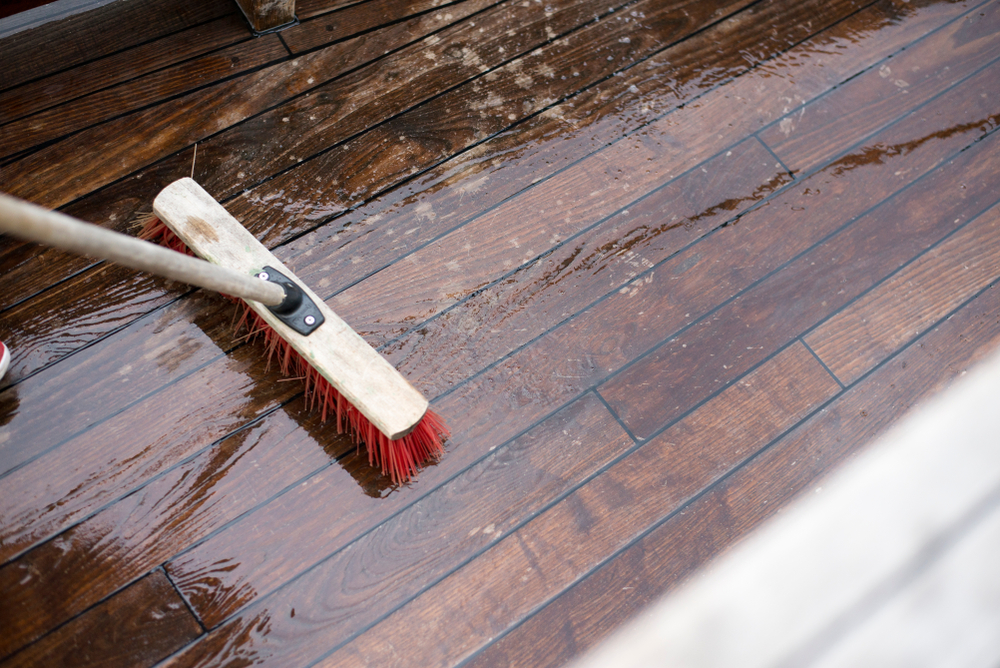
Use a sponge to clean a teak deck instead of brushes, which are too abrasive and can wear away the soft teak fibers. A pressure washer is another “no-no”, as it would easily blast away the soft wood fibers. Even a jet hose attachment is discouraged. Instead, use an open hose with unpressurized water.
Clean Your Teak Deck Regularly
The best method for cleaning a teak deck is to swab it with salt water once a week. Regular cleaning prevents dirt buildup, and the salt water acts as in inhibitor for mold and rot. Only use water to clean a teak deck. Never use detergents because they’ll strip the wood of the natural teak oil that preserves it.

Treat Your Teak Deck Periodically
Provided you’re washing your teak deck with water once a week, the wood should remain clean and healthy. However, giving teak decks a more thorough cleaning once or twice a year is recommended, depending on how much usage they get. For this annual or bi-annual deep clean, use a specially formulated teak deck cleaner to provide additional cleaning power without stripping the teak oil from the wood.
Choose Your Teak Deck’s Look
Classic weathered look or youthful glow? If you prefer your teak deck to develop the classic silver/grey appearance, regular washing with salt water and the occasional wash with teak cleaner will suffice.
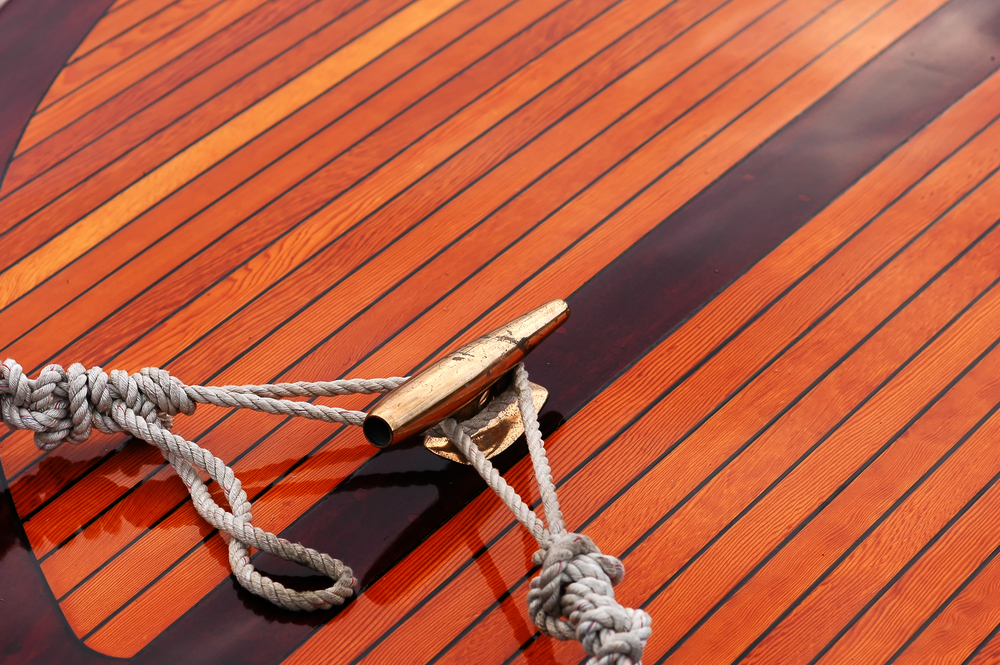
However, if you’d rather retain the warmer “new deck” look, first treat the wood with teak brightener before applying a protective coat of teak sealer. Teak brightener restores the color of the wood for a brand new appearance, while the teak sealer adds a protective coat that stops the wood from being dulled by dirt.
Remove Stains with Care
Things are going to get spilled on a deck, especially out on the water. If the teak gets a stain or mark that regular cleaning can’t handle, it may be necessary to give it a light scrubbing or sanding. Only use a brush with soft bristles or fine-grit sandpaper, but never apply too much pressure when scrubbing or sanding. Always brush across the grain, never with the grain, as doing so removes more of the soft teak fibers and wears the teak down faster.
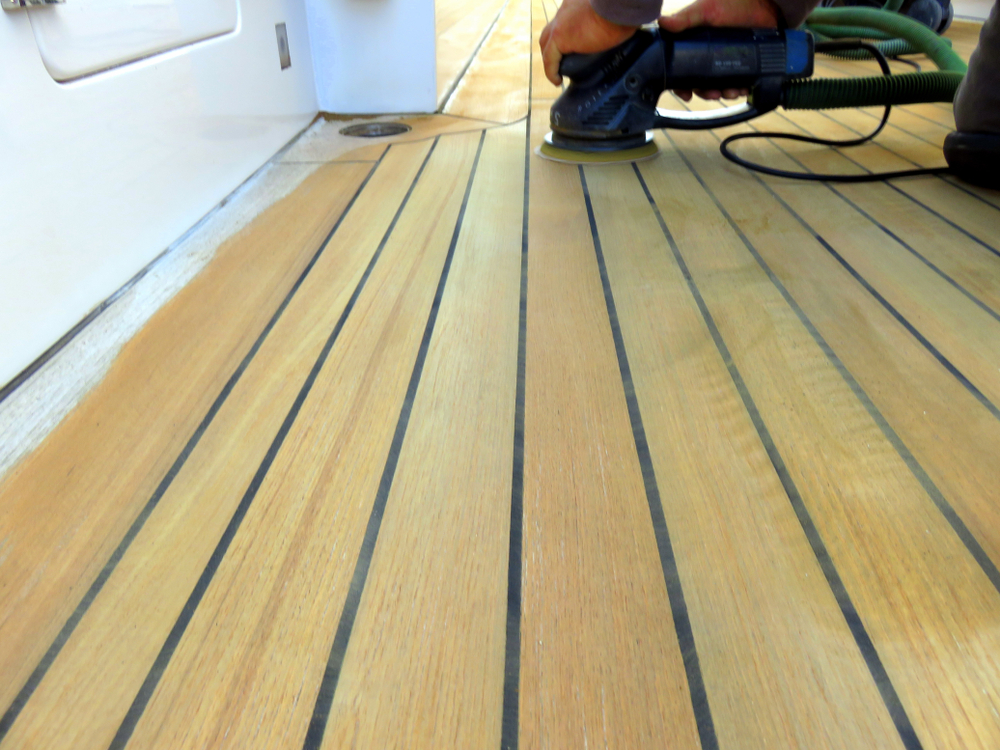
Replace Bad Caulking
Always be on the lookout for caulking that is coming loose. Water should never penetrate the deck’s core or get beneath the deck, which can cause it to expand, rot, or become unglued from the boat. As soon as you see loose areas of caulking, the old caulk should be dug out and replaced.
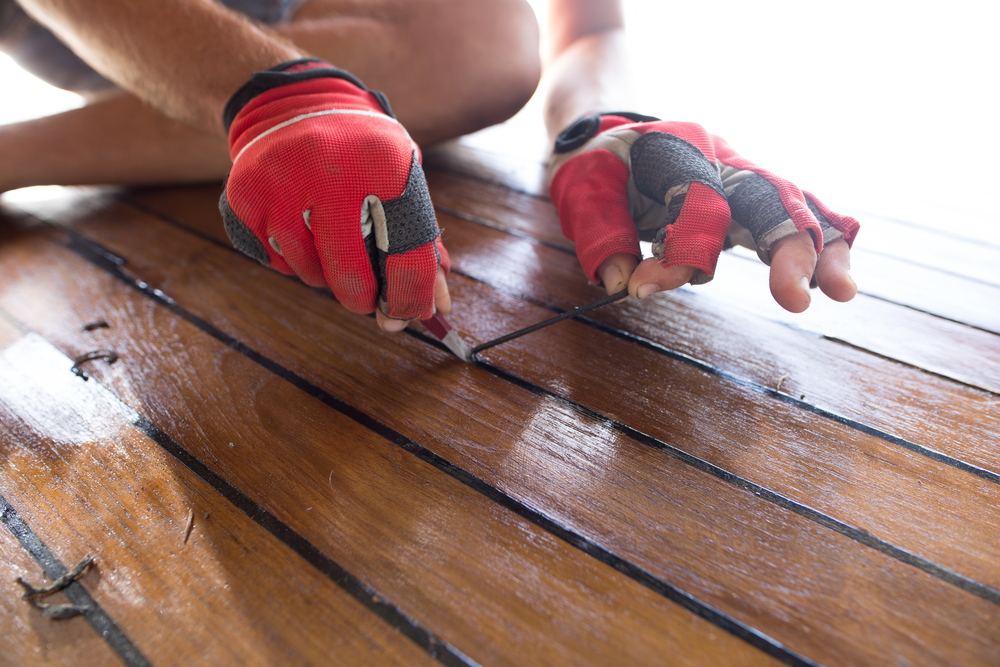
Repair Deck Plugs
If the teak deck is screwed to the boat, the screw holes will be protected with teak plugs. These can wear and come loose over time, which will allow water to penetrate the wood and get under the deck. Any loose deck plugs should be removed, then a slightly larger hole should be precision-drilled before a larger plug is installed in their place.
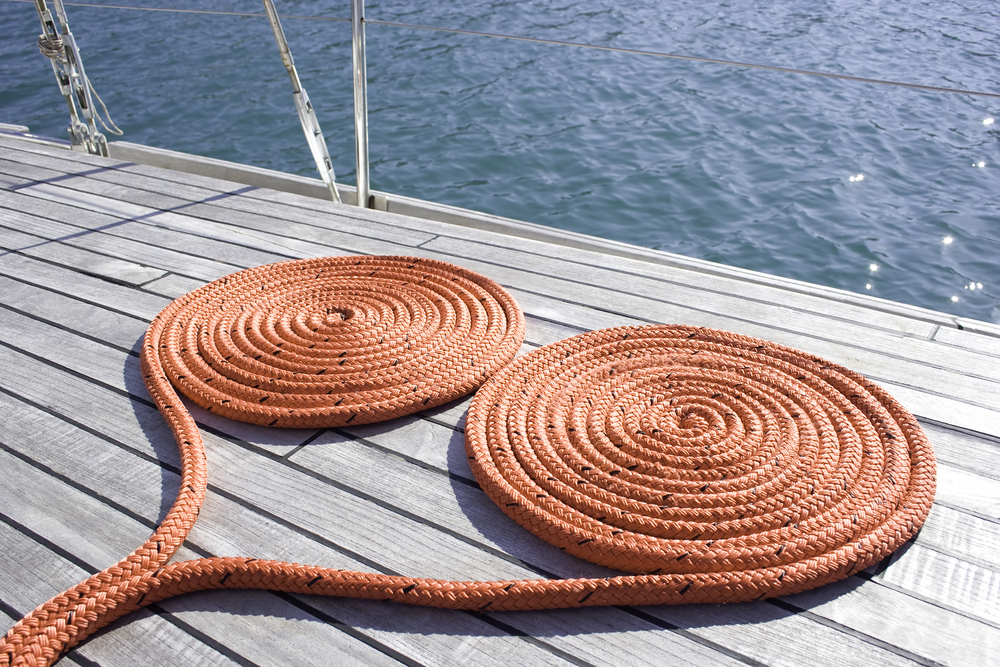
Teak deck that is cleaned and maintained will last for 10-20 years, whereas one that is neglected will need replacing after just a few years. When you consider how much replacing a teak deck costs, you’d be wise to look after your deck and stay on top of the upkeep.
View the full article here.
